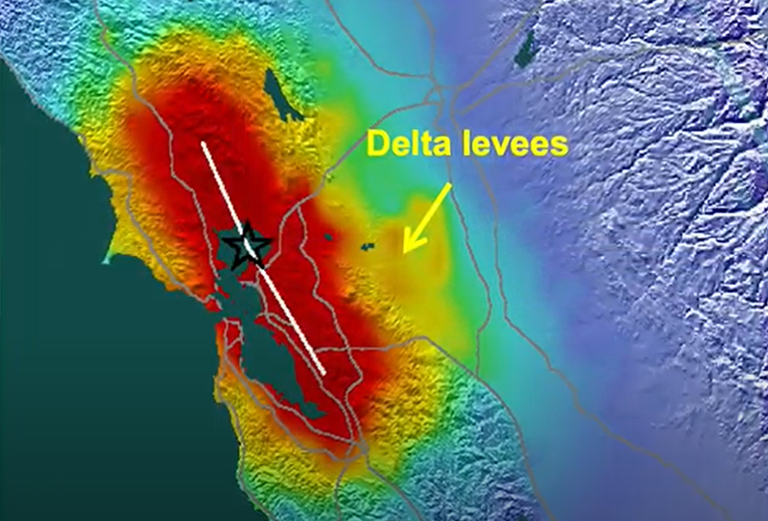Q/A: What are the risks of a major earthquake in the Sacramento-San Joaquin Delta? (Part 1)
-This is a caption display style to be used for describing various media items including photos and videos.
In the first of two Delta Conveyance Deep Dive episodes on seismic risks in the Sacramento-San Joaquin Delta, Laurence Sanati, head of the DWR Flood Systems Analysis Section, speaks about the potential consequences of a major earthquake in or near the Delta and the measures currently in place to deal with such an event.
The conversation was moderated by Patricia Clark, Associate Governmental Program Analyst in the Delta Conveyance Office. Watch the full interview.
Laurence, what would the State do if a major earthquake struck the Delta and caused damage to the levees?
Laurence Sanati: So, this issue is obviously something that we're well aware of and we've been planning for and strategizing on how to address for a long time now. We've developed many detailed plans to guide our response and recovery efforts. We've built some enormous stockpiles of rock, material and steel that can be distributed throughout the Delta to repair these potential levee breaches should they occur. We have equipment in place that can load these materials onto barges and transport them to where they're needed.
In addition to that, we've also spent a lot of effort in developing some very sophisticated modeling tools that help us evaluate the impacts of a specific event after it occurs and in addition to that, these tools can help evaluate the strategies we want to put in place to optimize our response and minimize the impacts to the State water supply. We also conduct trainings and exercises regularly to make sure that we have a sharpened response and should this occur, we're ready to act.
Over the last 10 years we've really put in a significant amount of effort to really bolster our capability to respond to a large catastrophic event in the Delta. We could easily fill a full Deep Dive video with the details on how we would respond to that, but I think the key point here is that we're very well prepared should a potential catastrophic event occur. We have the tools and plans in place to really guide our response and in some cases greatly reduce the impacts to our water supply. However, to implement these response actions, it can be costly. It takes time, and, for a big enough event, regardless of how well we're prepared, we could still experience a significant disruption to our water supply.
How does the Delta Conveyance Project fit in with this?
LS: When I think of the Delta Conveyance Project, it reminds me of an analogy I heard a while back. The analogy wasn't related to the project, but it's surprisingly fitting. Now, suppose you have a cliff that represents a hazard, where people could potentially fall off and get injured. There are two ways to address this hazard. One way is we could develop a very robust emergency response system. We could have ambulances strategically pre‑positioned. We could have very well‑trained medical staff that could quickly triage and rapidly transport the injured to the hospital. You know, whoever fell would receive top‑notch treatment in a very efficient manner. The other way we could address this hazard is we could put a rail at the top of the cliff, so people won't fall off in the first place.
So in terms of the Delta, we can continue to develop and invest in our ability to more effectively respond to a catastrophic failure to our water supply system now, or we could put this rail at the top of the cliff. What that means is we could build a seismically resilient tunnel that would preserve that crucial link between where water is and where it's needed and avoid the hazard in the first place. In my humble opinion, one of these two options is just the obvious choice. Now, that said, I'm very proud of all the effort that we've put into our response in preparation for an event like this, and I'm confident this preparation will result in a reduced disruption to our water supply, should this event occur. Considering the current state of the Delta and everything we talked about today, these emergency response efforts and preparations are essential. If we can solve the problem by removing the hazard, which in my understanding is the objective of the Delta Conveyance Project, well, in my opinion, it's better to remove a hazard than to try and mitigate it once it's occurred.
